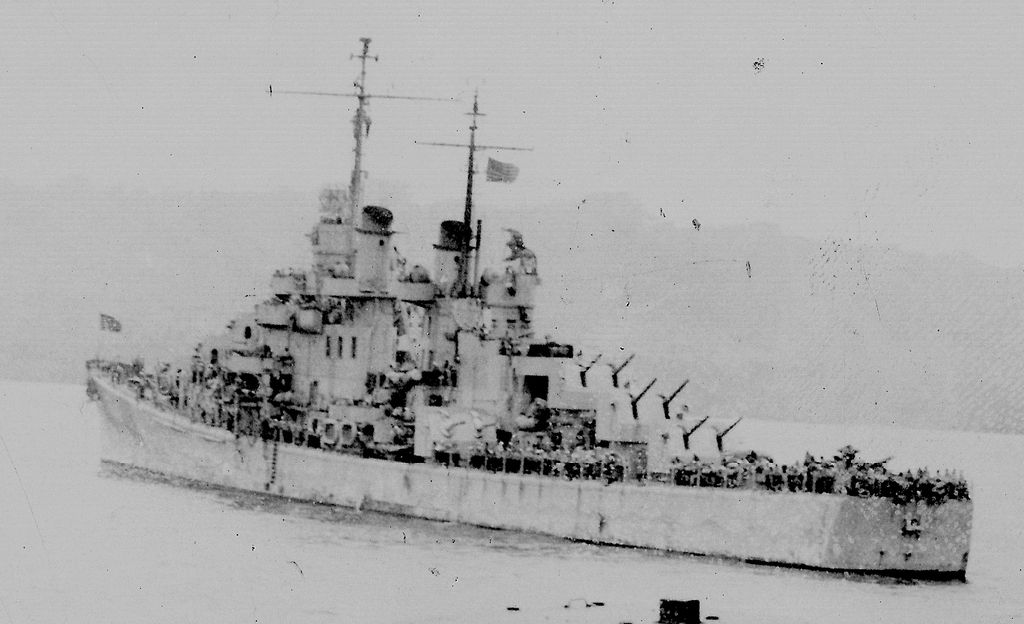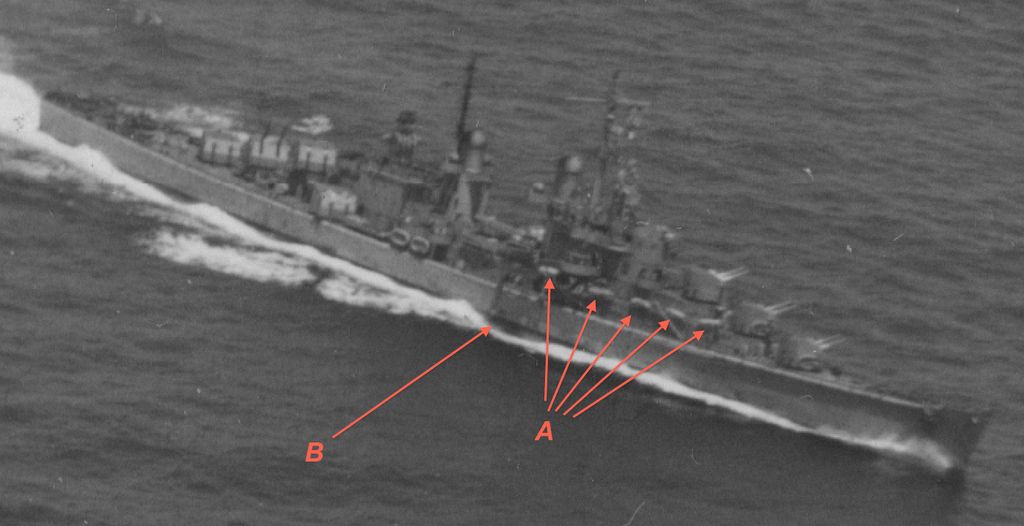I really don't know enough about JUNEAU and her camo to provide solid opinion one way or another. I have not attempted to study EVERY photo of JUNEAU either. I certainly have no skill at determining specific "colors" used. I'm also, still a little confused about just when everyone is wanting to know what JUNEAU's camo was. This brings me to a source that no one seems to have mentioned. Does anyone have or know about the old
Floating Drydock Profile book on USS JUNEAU (CL-52) published in 1993 and written by Rod Dickson? I have a copy of it I bought years ago. In pulling it out of my library and going through the booklet, I found that their study of what CAMO JUNEAU had during her short career from available photos and specifically what camo she had at the time of her lost interesting. What I find is that the photos they used and studied are the same ones that everyone assumes are NEW finds. They credit JUNEAU with being in four schemes during her career in the water according to the writer and his "photo analysis" team; Richard Frank, John Lundstrom, John Sawruk, and Thomas Walkowiak. They looked at the original USN photos at NARA. Also, he talked to as many survivors as he could find.
1) At time of launch she was painted in Ms 3, 5L Light Gray overall with 5D Dark Gray on the deck
2) During February 1942 her builder, Federal SB, Kearny, painted her in Ms 12mod with a splotch and dapple pattern
3) By June 1942 JUNEAU was wearing a third scheme; the superstructure camo was little changed with a harder edge to the pattern, but the hull was painted with a irregular "wave" of 5S Sea Blue and
5L Light Gray and a false bow wave. They say that her superstructure remained painted in the splotches/dapples until at least August 1942 and that the hull scheme remained until September 1942. The New York Navy Yard photos provide coverage of this scheme which appears to be experimental. But, since Ms 12mod had no "standard" pattern(s), that is a loose definition.
Her weather beaten wave camo is evident in photos of JUNEAU taken in September 1942 (aka the photos with LAFFEY). They think that her superstructure was in part or wholly been repainted as was the stern prior to those photos with either 5S or 5N and the hull was repainted after those photos. Based on the series of photos seen in 80-G-13611 and around it.
I will comment a little on this photo. Being old school and remembering when I took my own black and white photos, developed my own negatives and made my own prints, I can say this is an over exposed view. In this copy I increased the contrast to pick out as much detail as I can, which is little as far as camo goes. AS for why there are no shadows on this ship, you have to note the weather. It sure looks like a crappy day and appears to be either foggy or borderline rainy. No strong sun, no shadows. At least in this photo I can see her SC-1 radar on the mainmast and her SG radar on the foremast. As a side note, SAN DIEGO had her SG radar and her SC-1 radar was on the foremast.

4) By the time of the Battle of Santa Cruz JUNEAU had completely been repainted in OVERALL 5S (Ms 11) or 5N (Ms 21)
No mention of WHITE paint being used, but in a sea of 5S and 5N painted ships, 5L would stand out.
Just more food for thought.
How then as to this photo, 80-G-304513. I can't say for sure what color this ship is painted in, but it appears to be an overall scheme darker than 5L. I'm pretty sure that this is JUNEAU because it "looks like" her SC-1 antenna is on the mainmast and her SG radar is atop the foremast, not part way down as seen on SAN DIEGO. I have labeled this copy of the image noting the "light colored" objects forward on 01 deck edge (labeled A) and something else no one has mentioned the dark patch on the hull ... it is a cargo net deployed over the side of the ship (labeled B). I think I can comment on the "lighter" colored objects. It has been mentioned here that they could be floater net "baskets". But, there is another possibility; that they are "bundles" of floater nets. Something I came across in records for FLETCHER class destroyers was the use and location of floater nets and baskets in 1942 into 1943. Originally the floater nets were bundled and secured to the deck edges so they would self deploy if the ship sank. BUT, it was found that these easily got fouled up in combat and blocked deck passage. So baskets were used and mounted higher in the ships. Operational users in theater didn't like that location of the baskets. So for awhile and on quite a few early FLETCHERS, NO floater net baskets were installed, extra life rafts were shipped, and the floater nets were secured "wherever" the crews wanted them. I suspect that these are floater net bundles without benefit of baskets. If baskets had been used, they would have been painted.

One other thing. The new camo schemes, Ms 18, 21, 22, etc, direction came out in August 1942. In about late August the Atlantic Fleet selected Ms 22 (and in some cases Ms 18) for use on their ships. The Pacific Fleet already had selected Ms 11/Ms 21. The Pacific Fleet CO in October 1942 directed that ALL non-Ms 21 ships (destroyers specifically were mentioned) repaint into Ms 21 as soon as POSSIBLE within operational requirements. Not all ship CO's saw this as "URGENT".



